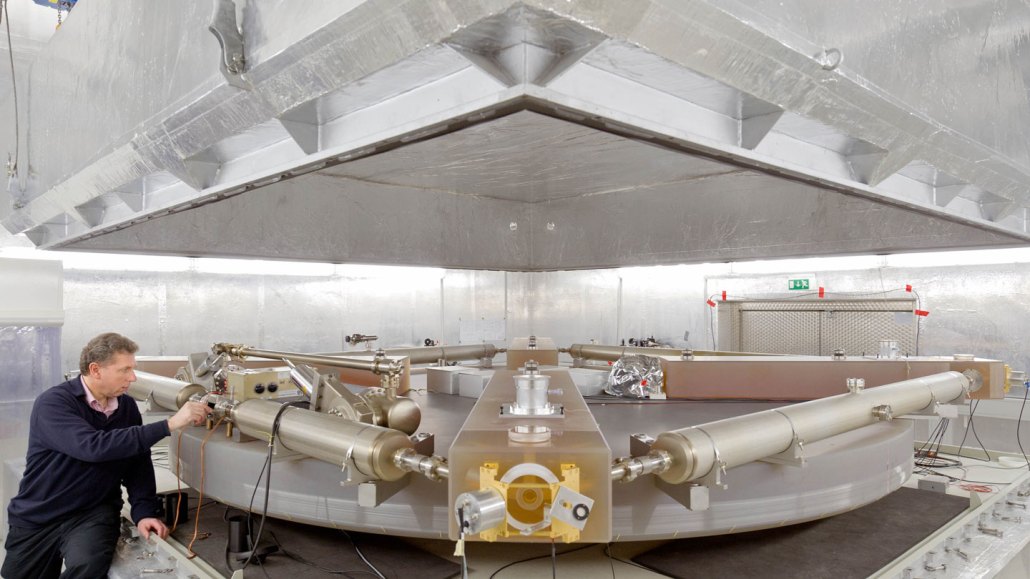
The ring laser gyroscope, G, measures tiny variations in Earth’s rotation. Developed by physicist Ulrich Schreiber (pictured with the gyroscope) and colleagues, the gyroscope uses the interference of laser beams to reveal the Earth’s spin.
A. Heddergott/TU Munich







